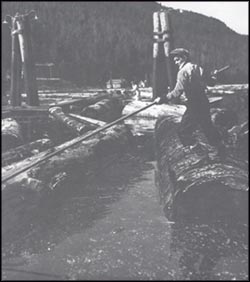|
Union Maid History BY SARA DIAMOND
" In 1976 I interviewed my then eighty year old grandmother. She related a rich and dramatic life history, one which began in the slums, garment factories and unions of the Lower East Side of New York and ended in Toronto, organizing pensioners to fight for rent subsidy and bus kiosk. Her story was filled with details of daily life, a layered pattern that intersected and at times drove forward the known events of history. That story, which was in part my own story, provided a locus where public and personal history connected, where the past becomes instrumental to an individual's present". This narrative is a microcosm of the power that the history of working women provides to contemporary women in the labour movement. I teach courses in Canadian labour history and the history of Canadian and British Columbian working women at the Labour Studies Programmer of Capilano College in British Columbia. My goal is to provide an academically sound and relevant history from the perspective of Canadian working class experience. It is a rewarding teaching context. Most working people have no access to the history of their union, let alone to the history of working class community life and families, or of the doubly invisible in the labour force -- working class women. Discovering that women have fought for equal pay within the labour force for over a hundred years, or that farm workers in British Columbia have struggled since the 1930s for legislative protection can be disquieting. It can also provide an inspiring sense of historical continuity, a repertoire of tactics for organizing and an analysis of the errors of past strategies. The historical learning process cannot be reduced to a set of easily extracted principles for union activity. Nonetheless, it is thrilling to hear that former students adapted the tactics of the Housewives' League of the 1930s to their current campaign for better benefits for unemployed members.
A labour studies program is a learning situation in which the instructor must identify with the area of history and adopt an advocacy perspective in order to communicate effectively with her/his students. This framework still leaves a huge area for debate and conflict. There are many different interpretations of labour history, and the motivations and actions of previous generation of female unionists. For example, some historians concentrate on the ways women were victimized and excluded by male dominated unions; others argue that women's labour history should explore the many ways working women were instrumental in changing conditions and structures.
|
| Back | Contents | Next |
 TEACHING
LABOUR STUDIES
TEACHING
LABOUR STUDIES